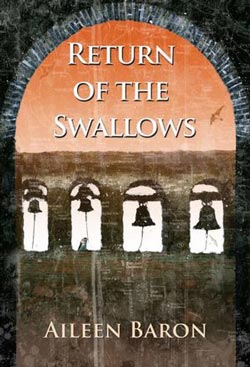
Tamar Saticoy, an archaeological consultant for Interpol, once again becomes mired in the devious world of the antiquities trade, this time in Thailand and California.
When Tamar finds a body buried under a burned mud brick wall at California’s famous Mission San Juan Capistrano, the head of the Juaneo tribe of Native Americans associated with the mission insists on claiming the body for reburial, threatening reprisals if it is not turned over to him. But Tamar discovers that the body is that of an Asian man, not a Native American—and definitely the victim of a recent murder.
Meanwhile, someone is pillaging archaeological sites on the Khorat Plateau in northeast Thailand. The contraband, some of it bracelets still wrapped around bones from looted burial sites, shows up in shoe boxes stored at the Orange County museum, Casa Del Sol. The curator and director of Casa del Sol ask Tamar to help analyze the artifacts.
As Tamar begins to suspect a connection between the murder at the mission and the looting of the Thailand sites, Interpol sends her as an undercover agent to Thailand to investigate the looting. There she is plunged into the deceit and danger of the antiquities trade and faces threats against her own life.
Return of the Swallows is the first Aileen Baron mystery I’ve read—I was drawn to it because the heroine, Tamar Saticoy, is an archaeologist, who investigates for Interpol on the side. She’s not a modern Indiana Jones, however—she’s much more concerned with real issues that face modern archaeologists than mystical artifacts and wild chases.
The story begins slowly, with a patient archaeological excavation at the famous Capistrano Mission, and seems as if it might examine an ancient burial. Then it’s revealed that the mystery is much more modern, suspenseful, and dark.
While forensic anthropologist Julie Barry, a friend of Tamar, investigates the body found at Capistrano, Tamar is drawn away from that excavation with enticements from a crooked, ambitious museum official named Dey to head up a new exhibit in a completely new field; this turns out to tie in to excavations performed in Thailand by one of her former mentors, now critically ill. When Interpol also requests her assistance, Tamar’s involvement is sealed.
Return of the Swallows ventures deep down into the grubby levels of international artifact-trafficking as well as exploring the many laws and moral issues involved in excavations and in arranging museum exhibits. If you’ve ever wondered how items arrived in glass cases for public viewing, it’s an eye-opener.
Dey’s attitudes are emblematic of the worst side of museums.
“We have a treasure trove here,” Dey said. “Thousands of artifacts, ceramic, bronze, all authentic, all collected from the Khorat plateau, uncovered by the local villagers, sold to art dealers in Bangkok, and then to private collectors in the U.S.”
“Looted, you mean?”
Dey threw up his hands in a helpless gesture.
“How does the Thai government feel about that?” Tamar asked.
“What they don’t know can’t hurt them. For all I know, they’d be for it because it promotes tourism.”
“This is all wrong,” she said.
“It isn’t wrong, not really. Sale of these artifacts forms a goodly proportion of the poor villagers’ annual income. The money could be used to improve schools, to build clinics.”
“Rationalization doesn’t make it any better.”
“. . . This sort of thing happens all the time. We get gifts from collectors, with a controllable gap between the collection and the donation and some kind of provenance. We have ways to take care of that.”
“Is that what you call it? Controllable gap? Is that a new term for plunder?”
“Nothing new about it. Trading in antiquities and collecting has been going on since ancient grave robbers broke into the tombs of the pharaohs. What I’m saying is that we have an obligation to develop a technique to interpret material donated to museums. If you can do this, you’ll have done a great service to all museums.”
She stared at him openmouthed and moved her chair further back.
Another museum employee reports that Dey is even more crooked than Tamar had assumed.
“Dey said some of it has to be donated to the museum, that Nina would appraise it at a high value, that the man could get a good tax write off . . . it would jack up the importance of the collection so that the museum could buy the rest at a high price . . . .”
Readers of suspense/thrillers will particularly enjoy this novel, I think. As well as the fascinating settings, it offers intriguing view of how artifacts move from their original use into the hands of either scholars or looters, and thence into the hands of museums or collectors, or from collectors to museums. Tamar is an intellectual, moral heroine and I was as much intrigued by her responses to the corruption she battled as to the suspenseful corruption plot itself.
Victoria Janssen is the author of three novels and numerous short stories. She has a World War I-set Spice Brief out in May titled “Under Her Uniform,” a tie-in to her novel The Moonlight Mistress. Follow her on Twitter: @victoriajanssen or find out more at victoriajanssen.com.

I attended elementary school in the Capistrano Mission, so this sounds really intriguing! (Was transferred to another school when my parents discovered the school’s earthquake plan was “Pray.”) 😉